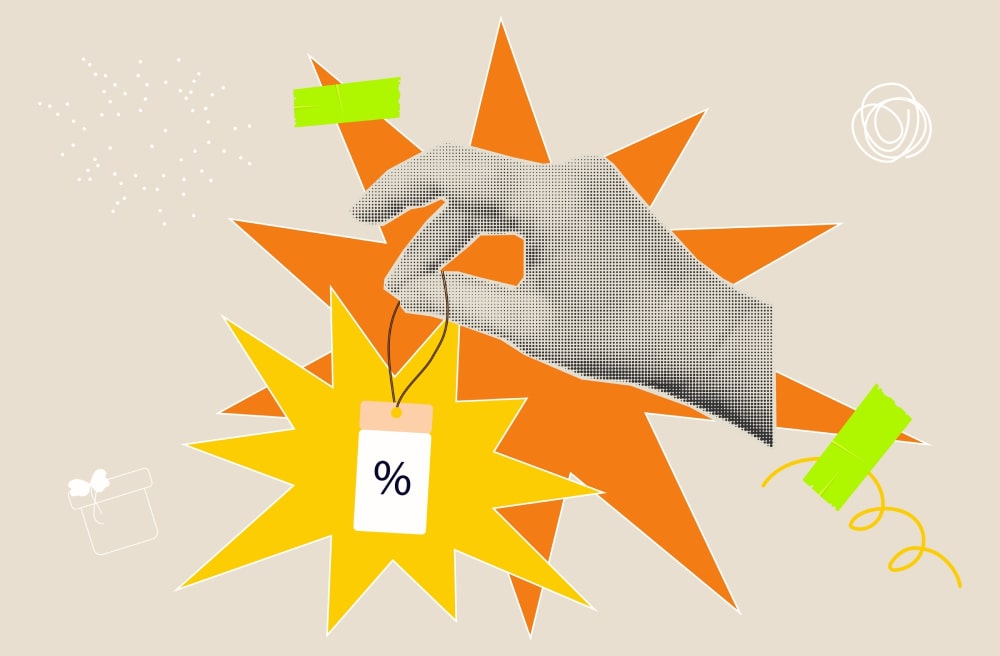What is the difference between “sticker price” and “net price” for college?

www.degreechoices.com is an advertising-supported site. Featured or trusted partner programs and all school search, finder, or match results are for schools that compensate us. This compensation does not influence our school rankings, resource guides, or other editorially-independent information published on this site.
The net price of college is the amount you actually pay to attend.
Tuition discounts mean that you could end up paying less than half the advertised sticker price.
We compare the net price for low- and high-income students at Ivy League and Big Ten colleges to see which offer a better deal.
How much does college really cost? That apparently simple question causes a lot of confusion because of differences in the way college prices are presented to the public.
One of the main reasons behind the confusion is the media’s constant focus on the sticker price of college – the published tuition and fee charges. The problem is that at most colleges, the sticker price is not the price that most students pay.
But you’d never know that from headlines: like “Annual Cost of Ivy League Degree Nears $85K, Causing Sticker Shock” or “Ivy League Costs Creep Close to $90,000 Per Year – Prices Juts Keep Going Up”.
The media sensationalizes the exorbitant sticker price (leading to demands for tuition freezes), but what most students actually pay to attend college is much less than those headlined numbers.
What is a sticker price for higher education?
Sticker price is the published cost of attending a college, including tuition, fees, room and board, and other related expenses. It can be misleading as it doesn’t account for financial aid or scholarships that students may receive. The actual amount students pay is typically much lower.
College sticker price:
The advertised total cost of college before financial aid and scholarships are applied.
Popular online programs
www.degreechoices.com is an advertising-supported site. Featured or trusted partner programs and all school search, finder, or match results are for schools that compensate us. This compensation does not influence our school rankings, resource guides, or other editorially-independent information published on this site.
What is “net price” for college?
Net price is the real out-of-pocket cost of college that most students pay after federal, state, and institutional financial aid and scholarships (but not loans) are subtracted from the sticker price. That’s the number that ultimately matters because that’s the amount that students and their families are on the financial hook for.
College net price:
What you pay for college after financial aid and scholarships.
Is college getting more expensive?
Despite rising sticker prices, a new report shows that the sticker price tuition discounts have reached an all-time high.
According to the 2022 NACUBO Tuition Discounting Study of 341 private, nonprofit colleges and universities, the average tuition discount for first-year, full time students was 56.2% in the 2022-23 academic year, and 50.9% for all undergraduates – both record highs. That means what families had to cover with loans and out-of-pocket was, on average, about half the advertised sticker price.
» Read: Colleges with free tuition
Other investigators have dug into federal data to learn more about what students from various family income backgrounds pay to attend a given college.
- The Hechinger Report maintains a tuition tracker that shows what students have to pay on average after subtracting the total financial aid they receive from all sources.
- Michael Itzkowitz, founder and president of the HEA Group, provides something similar with his Net Price for Low- and High-Income Students analysis.
Those analyses have discovered some curious patterns. For example, Hechinger investigators found that over the last decade, nearly 700 colleges raised the prices paid by their lowest-income students more than the prices paid by their highest-income ones.
Why is college so expensive despite tuition discounts?
While lower-income students usually still pay less than higher-income ones, the increases in college costs are falling more heavily on families that are likely the least able to absorb it.
Two factors are probably at play:
- Federal and state financial aid is failing to keep up with rising prices.
- Colleges are shifting more of their institutional aid, usually in the form of “merit” scholarships, to wealthier families, who pay a larger proportion of the sticker price than low-income families.
We decided to take our own look at this issue, using 2 categories of leading national universities – the 8 private institutions that make up the Ivy League, and the 14 universities (13 of which are public) known as the Big Ten.
What is the net price of college for low-income versus higher-income families?
For each institution, we compared the net price of 1 year of college (tuition, fees, and living costs) for 2 types of students:
- Those from families with an annual income of less than $48,000 (which would include most students who are eligible for federal Pell Grants).
- Those from families making $110,000 or more in yearly income.
The data come from the U.S. Department of Education’s College Scorecard for the 2019-20 academic year.
Here’s what we found.
Ivy League net price
The annual net price charged to students from families earning between $0-48,000 annually is in the first column, the amount for students from families with $110,000 or more is in the second column, and the difference is displayed in the third column.
| $0-48,000 | $110,000+ | Difference | |
|---|---|---|---|
| Harvard University | $2,133 | $42,312 | $40,179 |
| Yale University | $2,919 | $41,011 | $36,053 |
| Princeton University | $4,958 | $41,011 | $36,053 |
| Columbia University | $6,655 | $44,438 | $37,783 |
| Brown University | $7,409 | $44,033 | $36,624 |
| Cornell University | $8,013 | $52,887 | $44,874 |
| University of Pennsylvania | $8,339 | $43,447 | $35,107 |
| Dartmouth College | $10,532 | $52,251 | $41,718 |
While these numbers may have increased slightly for the 2022/23 academic year, the average annual price of attending an Ivy League school for a student from a family with low to moderate family income is likely still less than $10,000 per year.
The annual difference between that price and the amount students from higher-income families pay is in the $35,000-45,000 range, representing the significant amount of financial aid being directed to lower-income students attending the Ivies.
What these numbers don’t reveal is the fact that Pell Grant recipients comprise, on average, only 17% of the student body at Ivy League institutions, which is significantly less than the national average of 35%.
»Read: Are selective colleges really better?
Big Ten net price
Here are the results for the Big Ten universities, 13 of which are public institutions (Northwestern University is the only private school in the group; the data for Pennsylvania State was not available).
| $0-48,000 | $110,000+ | Difference | |
|---|---|---|---|
| Northwestern U. | $4,159 | $49,939 | 45,780 |
| Purdue U. | $7,164 | $20,859 | 13,695 |
| U. Michigan | $7,458 | $26,491 | 19,033 |
| U. Wisconsin | $7,631 | $25,436 | 17,804 |
| Indiana U. | $9,399 | $22,806 | 13,406 |
| U. Illinois | $9,445 | $27,285 | 17,840 |
| Ohio State U. | $10,522 | $24,870 | 14,348 |
| U. Minnesota | $10,568 | $25,369 | 14,800 |
| U. Maryland | $13,945 | $26,001 | 12,055 |
| U. Nebraska | $14,343 | $21,462 | 7,119 |
| U. Iowa | $16,553 | $22,516 | 5,962 |
| Michigan State U. | $16,874 | $27,534 | 10,660 |
| Rutgers U. | $17,484 | $30,616 | 13,132 |
As with the Ivy League schools, Big Ten students from low-income families pay a far lower net price than those from higher-income families. But, with the exception of Northwestern, the difference in net price is far lower than among the Ivies.
While students from lower-income backgrounds pay more on average to attend the Big Ten schools than the Ivies, the reverse is true for students from higher-income families, who pay almost twice as much to attend Ivy League institutions.
KEY TAKEAWAY
Lower-income students pay more to attend Big Ten schools than Ivy League institutions. Higher-income students pay a lot more for Ivies than Big Ten schools.
What accounts for this pattern?
Start with the fact that the Ivies charge a much higher sticker tuition price, which a number of students from wealthy families pay, bringing up the overall average net price among the $110,000+ family income group.
In addition, because of their much larger private endowments, the Ivy League universities can provide bigger financial aid packages from their own resources than most of the Big Ten. In other words, they are able to offer a much more generous tuition discount to poorer students.
Although Pell Grant recipients make up about 15-20% of the Big Ten schools’ undergraduate enrollments, their absolute numbers are much greater than at the Ivy League universities. So, while the large amounts of institutional financial aid provided by the Ivies makes them very affordable for lower- and moderate-income students, the greater odds of being admitted to a Big Ten university offsets that advantage for thousands of students.
Final thoughts
It’s important to compare college costs before making a decision. Don’t just rely on sticker prices, as your dream college may be more affordable than you realize. By comparing financial aid packages and scholarships, you may find that the cost is much lower than expected.
www.degreechoices.com is an advertising-supported site. Featured or trusted partner programs and all school search, finder, or match results are for schools that compensate us. This compensation does not influence our school rankings, resource guides, or other editorially-independent information published on this site.




